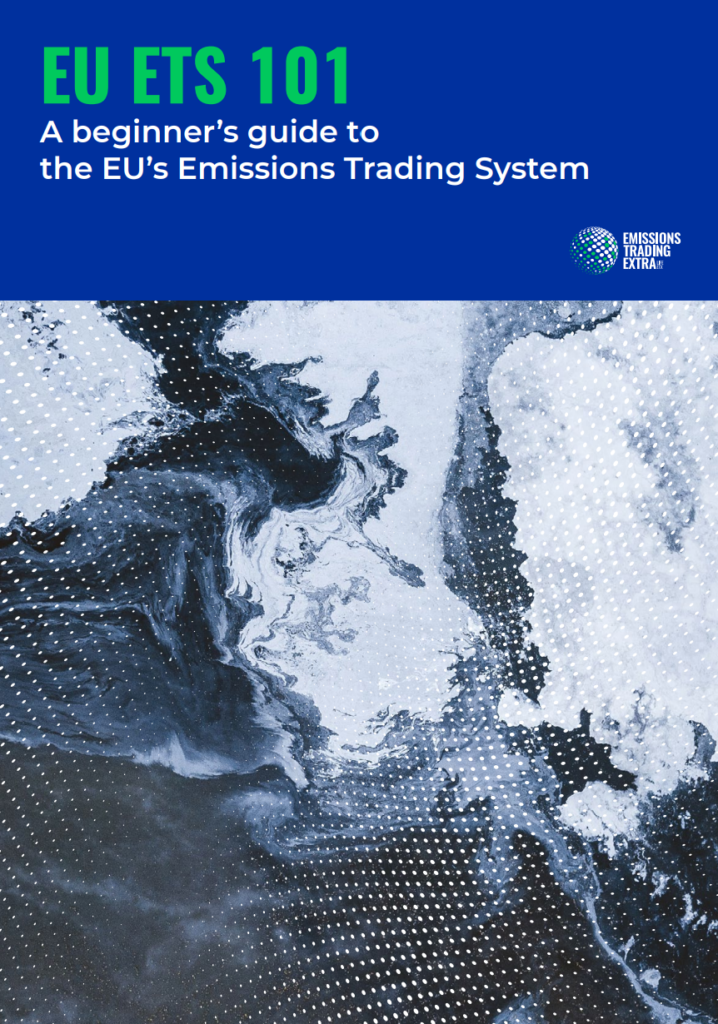EU ETS 101: A Beginner’s Guide to the EU’s Emissions Trading System

- Title
- EU ETS 101: A Beginner’s Guide to the EU’s Emissions Trading System
- Author(s)
- Wijnand Stoefs, Eleanor Scott, Lidia Tamellini
- Organisation
- Carbon Market Watch, LifeETX
- Year
- February 2024 (updated version)
- Type
- Guide, Report
- Length
- 37 p.
- Keywords
- Aviation, Cement sector, Chemical sector, Climate targets, ETS 1, Fit for 55, Free allowances, Industrial emissions, Introduction to the EU ETS, Just transition, LifeETX publication, Lobbying, Market Stability Reserve, Power sector, Steel sector, Transport emissions
SUMMARY:
This beginner’s guide to the EU ETS aims to build knowledge and understanding of Europe’s carbon market for civil society organisations who have little or no prior experience with EU climate policies, especially in countries in the EU neighbourhood. It provides introductory knowledge on how the EU ETS is designed and how it functions. Increased awareness should ultimately empower civil society to get involved in the ETS process and advocate for an effective and fair European carbon market.
The EU Emissions Trading System (EU ETS) is often referred to as a cornerstone of EU climate policy. It aims to reduce emissions by pricing greenhouse gas (GHG) pollution from the power, industry and aviation sectors. It not only seeks to promote investments in emission reductions by making energy-intensive business as usual expensive, but it also offers a great opportunity for the EU to shift funding from polluting activities to climate action, innovation and energy sector modernisation.
It covers more than 10,000 industrial and power installations and airlines operating flights in and between EU airports only, across the 27 EU member states, Iceland, Norway and Liechtenstein (and there is a link with the Swiss ETS).
Our recommendations:
We can draw a number of valuable lessons from the performance and reforms of the EU’s Emissions Trading System to make the following recommendations:
- Having a carbon market is not an aim in itself. It should be aligned with EU climate goals and the Paris Agreement 1.5°C target, and help ensure that the EU delivers its fair share of climate action.
- When demand is low, supply should follow. The Market Stability Reserve, introduced in 2018, functions as the EU ETS supply control mechanism. Each year, it takes in a percentage of the oversupply of emissions allowances. In order to achieve the EU’s climate goals, we recommend maintaining (or strengthening) the current 24% withdrawal rate, and the cancellation of excess allowances held in the MSR.
- Don’t undermine the polluter pays principle by granting free pollution permits or finding ways to subsidise polluters through the backdoor. Free allocation of pollution allowances under the EU ETS has caused emissions from industrial sectors to remain stagnant or decrease very slowly, while aviation emissions are still skyrocketing, if we exclude the temporary effects of the COVID-19 pandemic.
- Revenue from carbon pricing should be invested in climate action and in supporting a just transition to a climate-neutral society and economy. In the EU, 100% of ETS revenue is now earmarked for climate action but the failure of the EU to define what constitutes an investment of climate benefit means that in reality the money often goes towards general government spending.










